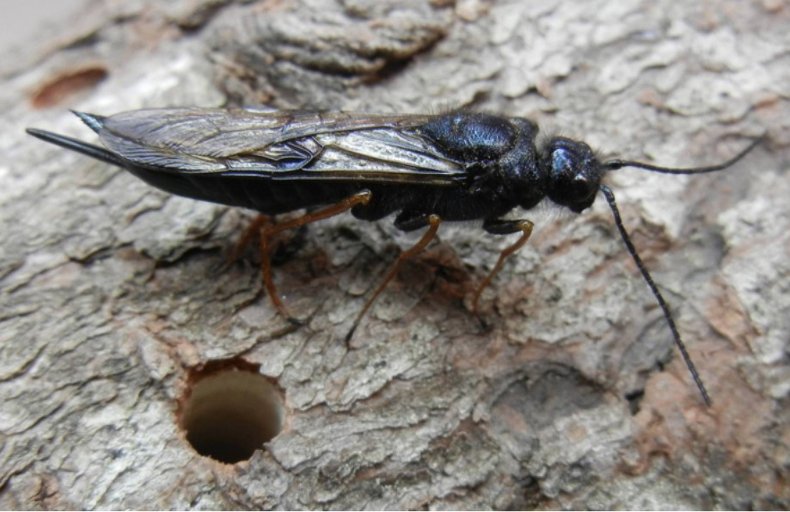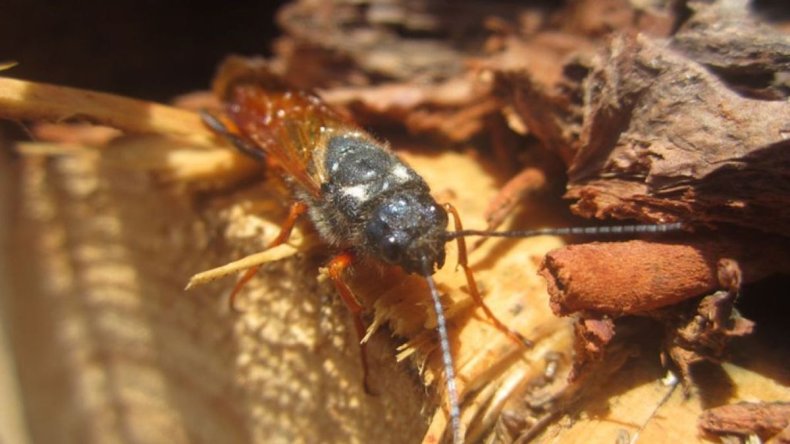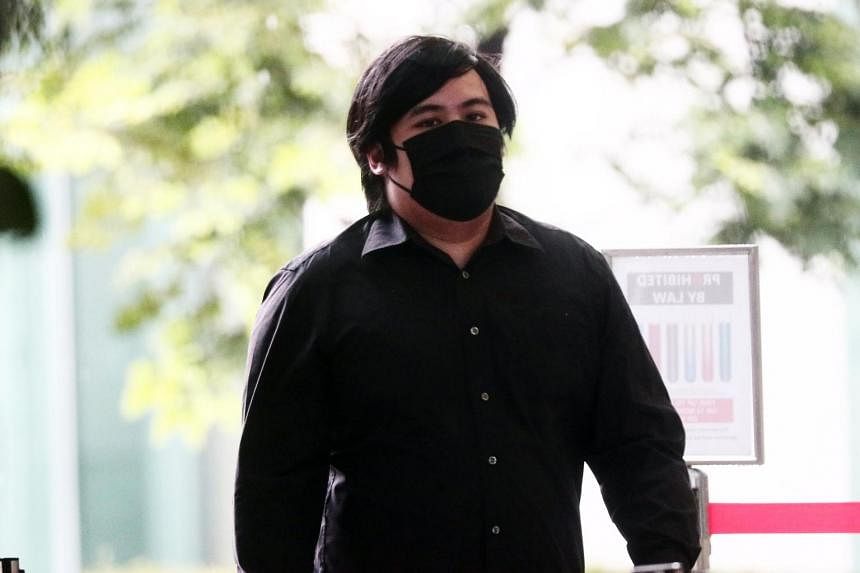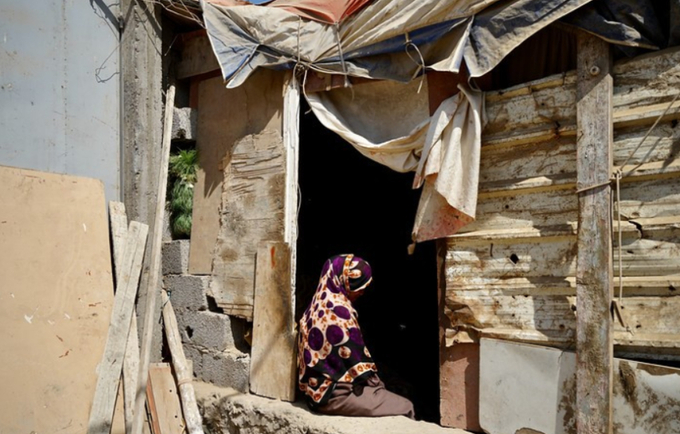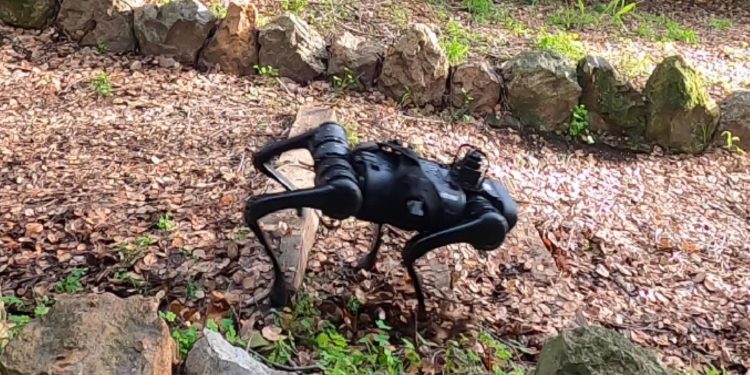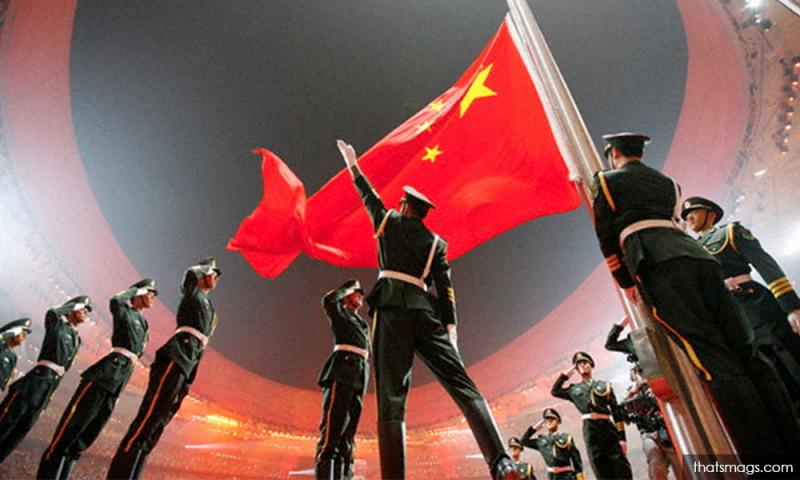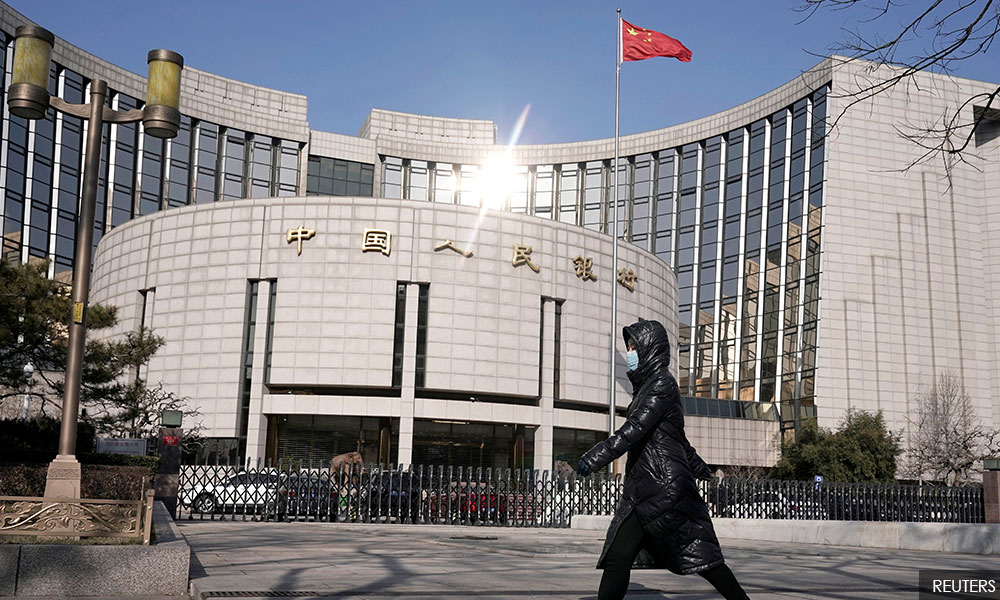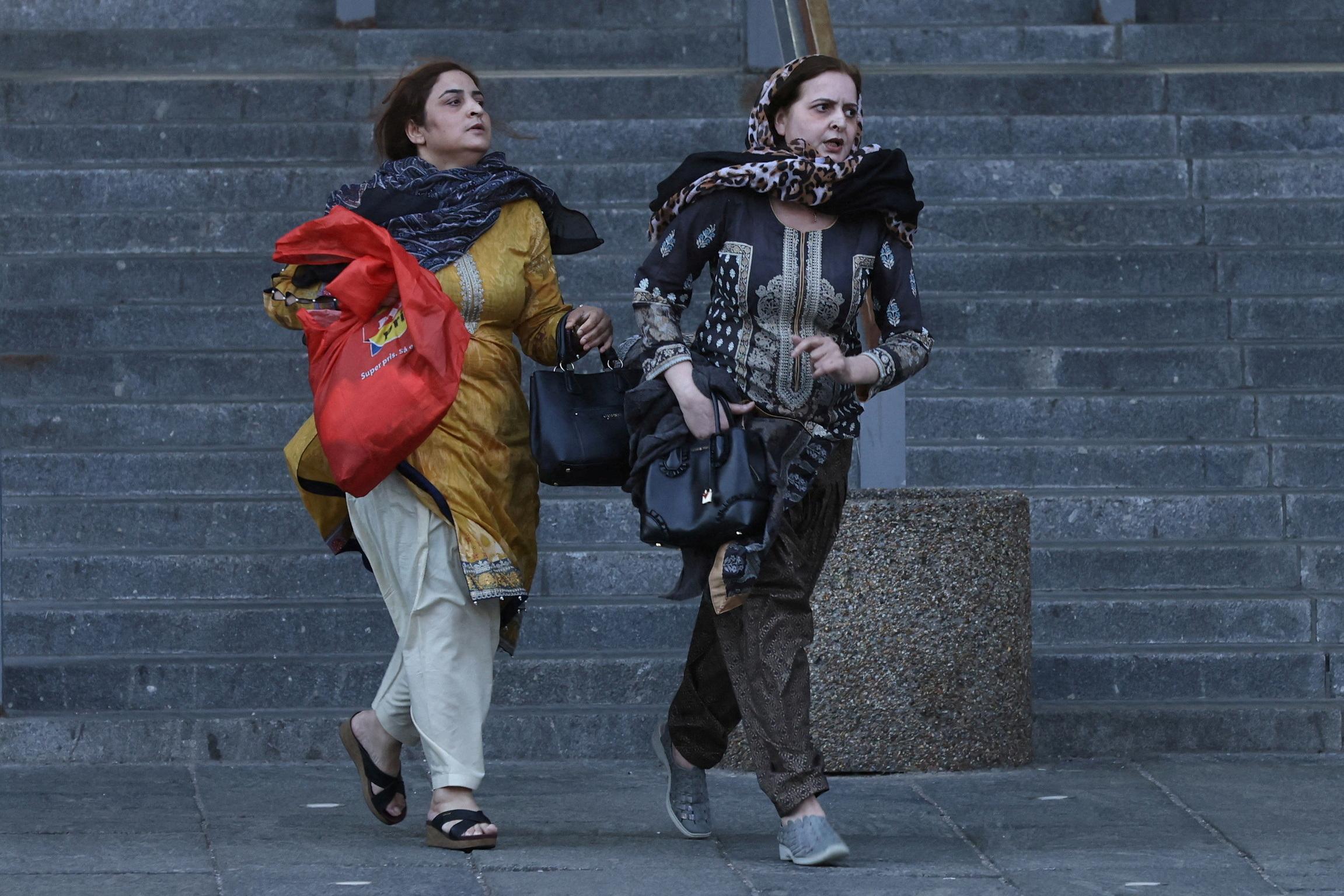LORDS OF WAR
SPECIAL REPORT-Dozens of Russian weapons tycoons have faced no Western sanctions
By Chris Kirkham and David Gauthier-Villars
July 1 (Reuters) - As Russia's military continues to pound Ukraine with missiles and other lethal weapons, Western nations have responded in part by targeting Russia's defense industry with sanctions. The latest round came on Tuesday, when the United States issued new sanctions on some arms makers and executives at the heart of what it dubbed Russian President Vladimir Putin's "war machine."
But a Reuters examination of companies, executives and investors underpinning Russia's defense sector shows a sizable number of players have yet to pay a price: Nearly three dozen leaders of Russian weapons firms and at least 14 defense companies have not been sanctioned by the United States, the European Union or the United Kingdom. In addition, sanctions on Russia's arms makers and tycoons have been applied inconsistently by these NATO allies, with some governments levying penalties and others not, the Reuters review showed.
Among the weapons moguls who have not been sanctioned by any of those three authorities is Alan Lushnikov, the largest shareholder of Kalashnikov Concern JSC, the original manufacturer of the well-known AK-47 assault rifle. Lushnikov owns a 75% stake in the firm, according to the most recent business records reviewed by Reuters.
The company itself was sanctioned by the United States in 2014, the year Russia invaded and annexed the Ukrainian peninsula of Crimea. The EU and UK leveled their own sanctions against Kalashnikov Concern this year.
The company accounts for 95% of Russia's production of machine guns, sniper rifles, pistols and other handheld firearms, and 98% of its handheld military machine guns, according to its website and most recent annual report. Its weapons include the AK-12 assault rifle, an updated version of the AK-47, some of which have been captured from Russian forces by Ukrainian soldiers. The Kalashnikov Concern also produces missiles that can be fired from aircraft or on land.
A former Russian deputy transport minister, Lushnikov once worked for commodities tycoon Gennady Timchenko, a longtime friend of Putin. The United States sanctioned Timchenko in 2014 following Russia’s invasion of Crimea, naming him as a member of the Kremlin’s “inner circle.”
Neither Lushnikov, Timchenko or the Kalashnikov Concern responded to requests for comment.
It’s the same pattern with Almaz-Antey Concern, a Moscow-based defense company specializing in missiles and anti-aircraft systems. The company has been sanctioned by the United States, EU and UK, but CEO Yan Novikov has not been punished.
Almaz-Antey’s website displays the motto “Peaceful Sky is Our Profession.” The company makes Kalibr missiles, which Russia’s Ministry of Defense has credited with destroying Ukrainian military installations. In a statement last month, the ministry said Russia had fired long-range Kalibr missiles at a Ukrainian command post near the village of Shyroka Dacha in eastern Ukraine, killing what the ministry claimed were more than 50 generals and officers of the Ukrainian military.
Reuters was unable to independently verify that claim.
Neither Almaz-Antey nor CEO Novikov responded to requests for comment.
In response to a list of questions submitted by Reuters about Western sanctions aimed at Russia, a Kremlin spokesperson said "the consistency and logic of imposing sanctions, as well as the legality of imposing such restrictions, is a question that should be put directly to the countries that introduced them."
The Reuters findings come as Ukrainian President Volodymyr Zelenskiy has said that current Western sanctions against Russia “are not enough” as Russian troops make gains in their assault on Ukraine’s eastern regions of Luhansk and Donetsk.
The Ukrainian military has been outgunned by Russian artillery in places such as the industrial city of Sievierodonetsk, which it ceded to Russian forces last week after weeks of intense fighting.
Putin has portrayed his military’s assault on Ukraine as a “special military operation” aimed at demilitarizing and “denazifying” its democratic neighbor. On Tuesday, Russia’s Foreign Ministry announced it would bar Jill Biden and Ashley Biden, the wife and daughter of U.S. President Joe Biden, from entering Russia indefinitely in what it said was a response to “constantly expanding U.S. sanctions against Russian politicians and public figures.”
U.S. National Security advisor Jake Sullivan said on Tuesday that Russia's action was not surprising because "the Russian capacity for these kinds of cynical moves is basically bottomless."
The Russian invasion has killed thousands of Ukrainian soldiers and civilians, but the exact number is unknown. The United Nations human rights office said, as of Monday, that 4,731 civilians had been killed in Ukraine since Russia’s invasion began on Feb. 24, including more than 300 children, with another 5,900 civilians injured in the conflict. The agency said most of the casualties were caused by the use of “explosive weapons with a wide impact area, including shelling from heavy artillery and multiple launch rocket systems, and missile and air strikes,” and that the actual number of dead and wounded was likely far higher.
The West has levied sanctions on a swath of Russia’s economy to punish Moscow, an effort that so far has done little to deter the Russian offensive. Like the bans on other Russian firms, sanctions on weapons companies are meant to hamper their ability to sell to foreign customers. These penalties limit their access to imported components and generally make it more costly and time-consuming to produce weaponry. Levying sanctions on the people behind those firms goes a step further to make the pain personal. It allows Western nations to go after any mansions, yachts and other offshore wealth of those who supply Russia’s military, and it limits where they can travel abroad.
“You’re demonstrating that being a regime collaborator comes with a cost,” said Max Bergmann, a former State Department official during the Obama administration who worked on U.S. arms transfers and safeguarding U.S. military technology. “They feel it very personally. You’re creating a disgruntled class of people that are tied to the Kremlin,” said Bergmann, now director of the Europe program at the Center for Strategic and International Studies, a Washington-based national security think tank.

Remains of a missile are seen near a rail station, amid Russia's invasion of Ukraine, in Kramatorsk, Ukraine April 8, 2022. The writing reads: "Because of children".
REUTERS/Stringer/File Photo

Rescuers work at a site of a shopping mall hit by a Russian missile strike, as Russia's attack on Ukraine continues, in Kremenchuk, in Poltava region, Ukraine, in this handout picture released June 28, 2022. Press service of the State Emergency Service of Ukraine/Handout via REUTERS

Smoke and fire raises from a shopping mall hit by a Russian missile strike, as Russia's attack on Ukraine continues, in Kremenchuk, in Poltava region, Ukraine June 27, 2022, in this screen grab taken from a video. Press service of the State Emergency Service of Ukraine/Handout via REUTERS

A view of the explosion as a Russian missile strike hits a shopping mall amid Russia's attack on Ukraine, at a location given as Kremenchuk, in Poltava region, Ukraine in this still image taken from handout CCTV footage released June 28, 2022. CCTV via Instagram @zelenskiy_official/Handout via REUTERS

A couple wounded in a shopping mall hit by a Russian missile strike hold hands in a hospital as Russia's attack on Ukraine continues, in Kremenchuk, in Poltava region, Ukraine June 27, 2022. REUTERS/Anna Voitenko/File Photo
AMMUNITION MAKERS UNSCATHED
Other companies in Russia’s defense industry identified by Reuters that have not been sanctioned by the United States, EU or UK include the V.A. Degtyarev Plant, a facility 165 miles northeast of Moscow that makes machine guns, anti-tank and anti-aircraft weapons that are sold to the Russian military. Its weapons include the Kalashnikov PKM and PKTM machine guns, as well as Kord rifles and machine guns, some of which are mounted on armored vehicles.
The Degtyarev Plant did not respond to a request for comment.
Also not sanctioned is the Klimovsk Specialized Ammunition Plant, south of Moscow, where “world-famous cartridges” for pistols and Kalashnikov assault rifles are produced, according to an archived version of its website. Neither is the Novosibirsk Cartridge Plant, an ammunition manufacturer that calls itself “one of the leading engineering enterprises of the military-industrial complex of Russia.”
Neither ammunition plant responded to requests for comment.
Last month, Reuters sought comments from sanctions officials in the UK, EU and United States regarding the news agency’s findings that they had failed to punish a raft of Russian defense firms and tycoons fueling Putin’s war effort. As part of that process, Reuters provided those Western authorities with a detailed list of more than 20 companies and more than three-dozen people that had escaped sanctions.
![]()
The UK’s Foreign, Commonwealth and Development Office, which levies sanctions for Britain, said it could not comment on future sanctions. It added that London and its allies had levied “the largest and most severe economic sanctions that Russia has ever faced, to help cripple Putin’s war machine.” The European Commission and the U.S. Treasury Department, which handle sanctions for Brussels and Washington respectively, declined to comment on the specifics of Reuters’ findings. Elizabeth Rosenberg, assistant secretary for terrorist financing and financial crimes at the Treasury Department, said in a statement that sanctions have “made it harder for Russia to obtain what it needs to procure and produce weapons.”
On Tuesday, in conjunction with a meeting of leaders of the G7 nations in the German Alps, the Treasury Department released a new round of defense-related sanctions that included eight of the weapons firms and two of the executives on the list provided earlier by Reuters.
One of those newly sanctioned executives, Vladimir Artyakov, has played key roles in Russia’s weapons industry for decades, and serves as the No. 2 executive at Rostec, a military-industrial giant with hundreds of subsidiaries employing more than half a million people, according to its website and annual reports. Artyakov is also the chairman of at least five Russian weapons firms, among them Russian Helicopters JSC, which builds several lines of military helicopters including the Ka-52 "Alligator," some of which have been shot down and documented in Ukraine.
He has not been sanctioned by the EU or UK.
Artyakov and Russian Helicopters did not respond to requests for comment.
Rostec has been sanctioned by Washington since 2014. On Tuesday the United States targeted the company again, levying sanctions on more than 40 Rostec subsidiaries and affiliates. Among those hit was Avtomatika Concern, a company linked to cyber warfare. It was on the list of Russian defense firms that Reuters had submitted to the Treasury Department last month seeking an explanation as to why the companies had not been sanctioned.
Rostec and Avtomatika Concern did not respond to requests for comment.
Other firms on Reuters’ list that were sanctioned just this week by the Treasury Department include PJSC Tupolev, a maker of fighter jets such as the Tu-22M3 bomber. The Ukrainian military said Tu-22M3 bombers were responsible for a missile strike at a crowded shopping center in the central Ukrainian city of Kremenchuk on Monday, which killed at least 18 people and injured about 60.
PJSC Tupolev and another firm on Reuters’ list, JSC VNII Signal, have not been sanctioned by the EU or UK. JSC VNII Signal is a producer of mechanical and navigational systems that power Russian military tanks and some of the country’s most advanced missile systems.
PJSC Tupolev and JSC VNII Signal did not respond to requests for comment.
TOP BRASS UNTOUCHED
Executives at a host of Russian weapons firms, meanwhile, have largely escaped sanctions from Western authorities.
Nearly three months after a Tochka-U ballistic missile hit a train station in the eastern Ukrainian city of Kramatorsk on April 8, Russian weapons executives linked to the company that makes those missiles have yet to pay a price. The strike killed more than 50 people, including children, and injured more than 100 others.
The Russian firm JSC Research and Production Corporation Konstruktorskoye Byuro Mashynostroyeniya, known as KBM, has been the primary manufacturer of Tochka-U missiles, according to a U.S. Army database of worldwide military equipment. Neither Washington, Brussels or London have sanctioned Sergey Pitikov, KBM’s chief executive.
The three Western allies have likewise spared Alexander Denisov, the CEO of NPO High Precision Systems, KBM’s parent company. High Precision Systems oversees production of a wide range of missiles, artillery, grenade launchers and machine guns used by Russian troops and outfitted on military helicopters, aircraft, tanks and warships.
Sanctions on Russia’s arms companies and tycoons have been applied inconsistently by the Western allies. The United States and EU have sanctioned High Precision Systems, for example, while the UK has not. The United States has sanctioned KBM, but the EU and UK have not.
High Precision Systems, Pitikov and Denisov did not respond to requests for comment. KBM confirmed that Pitikov is its chief executive, but did not respond to additional questions submitted by Reuters.
Europe and the United States have failed to coordinate sanctions even on makers of banned weapons.
Since the outset of Russia’s invasion in late February, Western governments and human rights groups have decried its use of cluster munitions: small bombs delivered by missiles or rockets, which scatter and explode over an area as large as a city block. A 2008 international treaty bans their use or production under any circumstances because of the devastating effects on civilians.
Russia used a Uragan – which translates to “Hurricane” – rocket launcher system to fire cluster bombs in Kharkiv on March 24, killing eight civilians and injuring 15 others, according to the U.N. human rights office and Ukrainian officials.
The Uragan is made by JSC Scientific and Production Association Splav, a Russian firm whose systems have been sold abroad to countries including India. The company has been sanctioned by the United States, but not by the UK or EU. Its CEO, Alexander Smirnov, has escaped sanctions altogether.
Splav and Smirnov did not respond to requests for comment.
It’s much the same for Splav’s parent company, NPK Techmash. The United States and the EU have sanctioned the firm, but the UK has not. Techmash CEO Alexander Kochkin has not been targeted by American or European authorities.
Techmash and Kochkin did not respond to requests for comment.
In a June 10 statement, the European Commission said there is an effort to align sanctions lists “as much as legally possible” among allies to achieve “the maximum cumulative effect of the sanctions with all our like-minded partners.” In cases where the lists do not align, the Commission statement said, people and companies not currently on the EU’s sanctions list could be added later if there is sufficient evidence.
"Nothing is off the table," the statement said.

Russian President Putin aims a Chukavin sniper rifle SVCh-308 at Patriot military theme park outside Moscow

Russian President Vladimir Putin (2nd L) listens to Yan Novikov, chief executive of Russian missile manufacturer Almaz-Antey, during a visit to the new 70th Victory Anniversary plant producing missile systems, in Nizhny Novgorod, Russia

Yan Novikov, chief executive of Russian missile manufacturer Almaz-Antey
WESTERN CONNECTIONS
One of the highest-profile Russian firms to escape Western sanctions is VSMPO-Avisma Corp, which is the world’s largest titanium supplier and 25% owned by Rostec. It supplies Russia’s defense industry, but also counts major Western aerospace companies among its clients.
Based in Verkhnyaya Salda, in central Russia, VSMPO-Avisma has subsidiaries with facilities in the United States, Switzerland and the UK, as well as sales and distribution staff in the United States, Europe and Asia, according to its website and annual reports. That’s no doubt a factor that has allowed the company to escape punishment, according to three sanctions and Russian defense experts who spoke with Reuters.
VSMPO-Avisma’s vice chairman and majority shareholder, Russian billionaire Mikhail Shelkov, ranked by Forbes this year as Russia’s 59th-richest person, likewise has not been sanctioned.
According to past press releases, VSMPO-Avisma has long-term contracts to supply titanium to United Aircraft Corp, a Rostec subsidiary that oversees production of Russian fighter jets such as the Su-34 that have been shot down in Ukraine. United Aircraft has been sanctioned by the United States, EU and UK.
VSMPO-Avisma also sells to Europe’s Airbus, and it supplied U.S. aerospace behemoth Boeing Co up until March, when the Arlington, Virginia-based company said it stopped purchasing titanium from Russia. Boeing had announced just months earlier, in November 2021, that VSMPO-Avisma would be its largest titanium supplier “for current and future Boeing commercial airplanes.”
VSMPO-Avisma and shareholder Shelkov declined to comment. Boeing said in a statement that it has worked since 2014 to diversify its sources of titanium around the world, and that its current inventory and sources "provide sufficient supply for airplane production."
Airbus did not answer specific questions about its relationship with VSMPO-Avisma. But in an emailed statement it said potential sanctions on Russian titanium “would massively damage the entire aerospace industry in Europe” while doing little to harm Russia because those sales are but a small portion of that nation's overall exports.
In 2020, foreign sales accounted for about two-thirds of VSMPO-Avisma’s $1.25 billion in revenue, according to the company’s most recent annual report.
That puts Western officials in a tough spot, said Richard Connolly, director of Eastern Advisory Group, a UK consultancy that advises governments and businesses on the Russian economy and its defense industry. Slapping sanctions on VSMPO-Avisma would curtail its lucrative export trade, but it would also force major players in global aviation to switch suppliers or risk sanctions themselves.
“That’s the classic sanctions conundrum: If you want to hurt somebody, you’re going to hurt yourself,” Connolly said.
(Reporting by Chris Kirkham in Los Angeles and David Gauthier-Villars in Istanbul; Additional reporting by Tim Hepher in Paris; Editing by Marla Dickerson and Vanessa O'Connell.)

